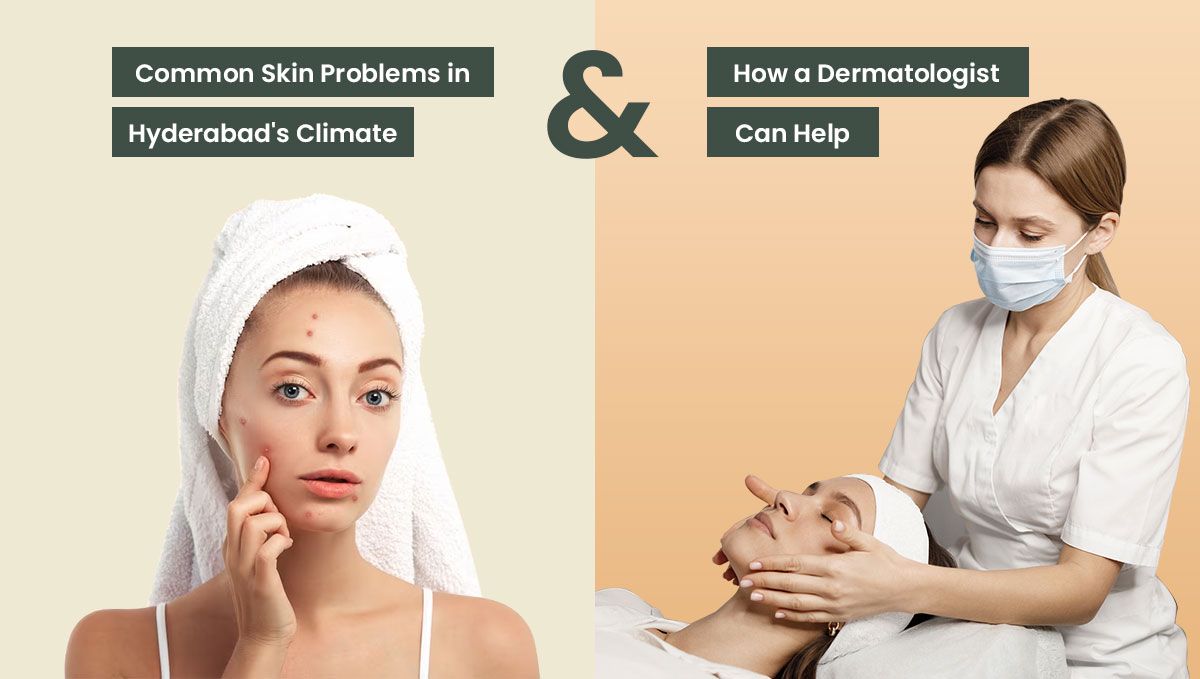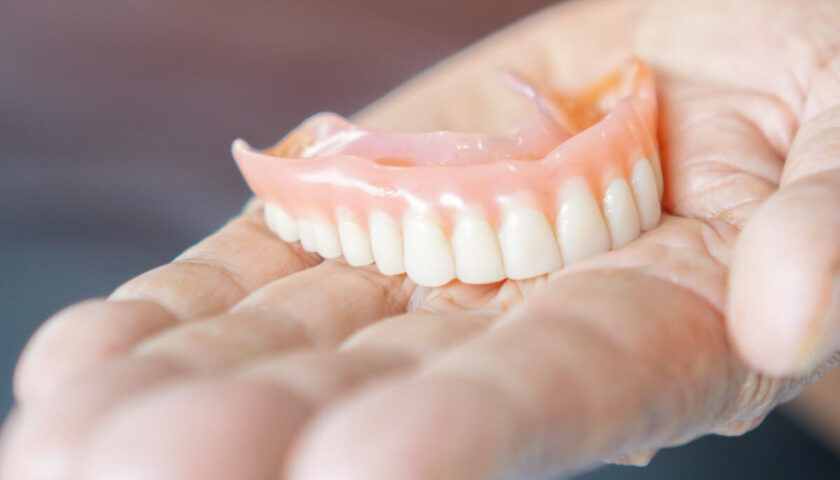Hyderabad, known as the “City of Pearls” is the capital of Telangana, a South Indian state. This boasts of a unique blend of traditions and modernity along with diverse culture, and offers semi-arid climate which include hot and dry days followed by rain. While the city has its own charm of historical places, culture and IT companies, meanwhile the climate has its charms which reflects on the skin. In the semi-arid season, skin may experience various issues and allergies like pigmentation, eczema, etc.
Dr. Ravali Yalamanchili is a leading dermatologist in Hyderabad. She is founder and chief of Neya Dermatology & Aesthetics clinic located on Jubilee Hills in Hyderabad. She, with her team of experts at this clinic, addresses a variety of skin concerns caused by climate change. By taking reference from this expert, this post is drafted to explore some common skin problems that Hyderabad’s climate can exacerbate. Additionally, it will provide a guide on treatment for such climate based skin issues.
Have A Look: is industrial specialties a good career path
Skin Issues Caused by The Climate of Hyderabad
Generally, skin issues and allergies develops in the semi-arid weather of Hyderabad are as follows:
- Dryness of the Skin
City’s hot and arid climate can leave the skin parched. Excessive heat and dehydration can make skin dull, flaky, and prone to fine lines and wrinkles. As a result the natural moisture of skin has to compromise during heating days and when the humidity drops. Sometimes, dehydration may cause white spots, cracks on the skin as well.
- Sun Damage and Pigmentation
Strong solar beams are not unfamiliar to Hyderabad. Uneven skin tone, sunburn, and sunspots can be caused by prolonged sun exposure without wearing enough sunscreen. UV rays can make pigmentation conditions like melasma, freckles, liver spots more obvious.
Have A Look: How Many Jobs Are Available In Major Pharmaceuticals?
- Acne Caused by Excessive Sweating
Especially in the summer, Hyderabad’s hot temperatures and intense sunlight cause more perspiration to be produced. Excessive sweating can clog pores and make acne breakouts worse when combined with pollution. The problem may get worse since the humidity might foster the growth of bacteria.
- Skin Infections and Fungal Conditions
In Hyderabad, the monsoon season might provide reprieve from the oppressive heat, but it also raises the danger of skin illnesses. Athlete’s foot, ringworm, fungal acne, and other conditions can develop as a result of humidity and moisture.
- Irritations and Allergies
The air quality in Hyderabad can change, and pollution can cause skin sensitivities and irritations. Dust mites, pollen, and airborne pollutants are among common allergens that can cause itchy, irritated skin.
- Premature Ageing
Dehydration, pollution, and sun exposure together can hasten the aging process and cause early wrinkles, fine lines, and loss of skin elasticity.
- Eczema and Psoriasis
Hyderabad’s climate can be particularly challenging for individuals with chronic skin conditions like eczema and psoriasis. Dry and hot weather can worsen the symptoms, causing itching, redness, and discomfort.
Clinically Acclaimed Skin Care Treatments Provided by A Skin Doctor in Hyderabad
To address and treat the climated based skin issues pertinent treatments provided by various skin doctors in Hyderabad by experts like Dr. Ravali Yalamanchili, are as given below:
- Chemical Peel:
It is a cosmetic procedure. It involves the use of a chemical solution on the skin to exfoliate and remove the outer layers of damaged or aged skin. This treatment is used:
- To improve skin texture,
- Reduce the appearance of fine lines and wrinkles
- Treat acne scars, and uneven skin tone.
Depending on the exact skin issues and intended results, chemical peels come in a variety of depths, including superficial, medium, and deep peels. A dermatologist or other qualified professional should decide on the sort of peel and how strong it should be to suit each person’s skin type and demands.
- Carbon Laser Peel
Carbon laser peel is also known as a “Hollywood peel” or “Black Doll laser.” This laser based cosmetic treatment combines the application of a carbon-based lotion with the use of a laser light. The carbon lotion is applied to the face, where it penetrates and attaches to impurities in the skin. The laser then targets the carbon particles, breaking them apart and stimulating collagen production. This treatment helps improve:
- Skin texture
- Appearance of pores
- Acne and pigmentation issues.
- Laser Toning
Laser toning also known as laser facial toning is a laser-based non-invasive cosmetic skin care treatment. It targets the deeper layers of the skin to stimulate collagen production and improve skin tone and texture. It is particularly useful for treatments of:
- Fine lines, sun damage, and mild to moderate skin laxity
- It is beneficial for more youthful skin
- Radiant appearance without downtime.
- Laser Resurfacing:
Laser resurfacing is a more intensive laser treatment that aims to improve skin texture, reduce wrinkles, and address moderate to severe sun damage and scarring. It involves the removal of outer skin layers using laser energy, which also stimulates collagen production in the deeper layers. Meantime two popular types of laser resurfacing are as follows:
- Ablative
- Non-ablative.
Ablative lasers remove the top layer of skin more aggressively, while non-ablative lasers are less invasive and require less downtime.
- Anti-Wrinkle Injections
Anti-wrinkle injections are injectable treatments that are primarily used to smooth out wrinkles and fine lines on the face, particularly in areas like the forehead, between the eyebrows (glabellar lines), and around the eyes (crow’s feet). Results typically last several months, and regular maintenance injections may be needed to sustain the effects.
- Vampire Facelift
The Vampire Facelift is a non-surgical cosmetic procedure that combines two treatments: PRP (Platelet-Rich Plasma) therapy and dermal fillers. PRP is derived from the patient’s own blood and contains growth factors that promote collagen production and tissue regeneration. After PRP is prepared, it is injected into the face along with dermal fillers to enhance volume and reduce wrinkles. This combination aims to improve skin texture, stimulate natural collagen production, and restore a youthful appearance.
- Dermal Fillers
Dermal fillers are injectable substances, such as hyaluronic acid or collagen. These are used to add volume, smooth wrinkles, and enhance facial contours. Fillers address various concerns, including:
- Volume to cheeks and lips,
- Reducing the appearance of nasolabial folds (smile lines)
- Softening marionette lines.
Dermal fillers provide immediate results with minimal downtime and can last anywhere from several months to a couple of years, depending on the product used.
- Medical Facials
Medical facials are customised facial treatments offered by dermatologists or skin experts. Unlike traditional spa facials, medical facials are tailored to address specific skin concerns, such as acne, pigmentation issues, and signs of aging. Different type medical facials to address various skin concerns are:
- Hydrafacial
- Photofacial
- Oxy Peel Facial
- Carbon Laser Peel
- Carbon Peel
- Pumpkin Peel Facial
- General Dermatology
General dermatology refers to the diagnosis and treatment of various skin conditions and diseases like acne, eczema, psoriasis, and more. It includes medical evaluations, prescription medications, and surgical procedures when necessary to manage skin-related health concerns.
- Microneedling with Radiofrequency
Microneedling with radiofrequency (RF) is a minimally invasive skin rejuvenation procedure that combines two technologies. Microneedling involves the use of fine needles to create tiny punctures in the skin, stimulating collagen production and improving skin texture. Adding RF energy heats the deeper layers of skin, enhancing collagen remodelling and tightening. This combination can address concerns like wrinkles, acne scars, and skin laxity.
Final Thoughts
Maintaining healthy skin in Hyderabad’s climate can be a daunting task, but with the guidance and expertise of a dermatologist, one can protect the skin from climate impacts. In addition to learning about preventive measures, regular consultations with a skin doctor is advisable. One can consult the expert skin doctor in Hyderabad, Dr. Ravali Yalamanchili, to proactively manage skin health and tackle any emerging issues. To know more, consult the expert at Neya Dermatology & Aesthetics clinic.




